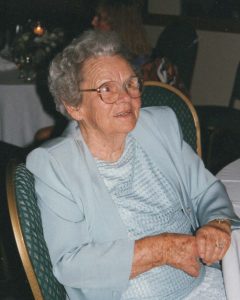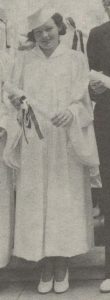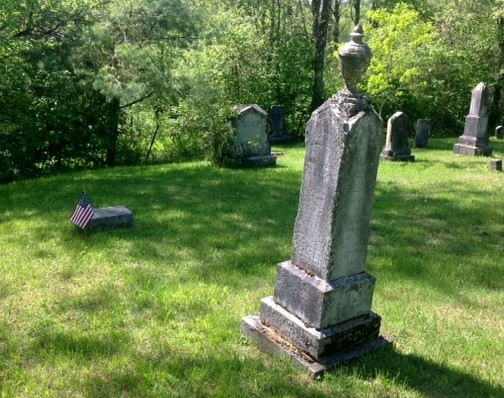
Among the emotions experienced at the conclusion of a genealogical investigation – surprise, satisfaction, pride, shock, joy, bewilderment – healing ranks high on my list. Almost 20 years ago, my friend Nancy Parsons Crandall asked me to prepare a family genealogy as a wedding gift to her son.
Nancy grew up with little family information of any kind. Three of her grandparents – two in Woonsocket, Rhode Island, and one in Rutland, Vermont – died within a month of one another during the flu epidemic of 1918.
While Nancy expressed deepening curiosity about what I might find, she cautioned me that her mother, Catherine “Cassie” Dunn Parsons, then in her early 80s, had no enthusiasm for this undertaking. Cassie’s bitterness spilled into a conversation we had while listening to a summer band concert: “I have no interest in dredging up the past. When I was three, my mother died, and my [maternal] grandmother took me and my one-year-old brother. I remember how she helped me with my high-button shoes. Then, one day, we were taken away, to be raised by my father’s cousin. I guess my grandmother didn’t want us anymore.”
Of course, the story was much more complex than Cassie ever knew. Her father, Patrick Dunhine, shortened to Dunn, a 40-year-old Irish immigrant from Sligo, had married Abigail Dutton, a divorced Yankee Protestant. Their marriage put them at odds in both church communities and with their extended families.
Following the death of Cassie’s mother, no one spoke of her parents.
One of Cassie’s last memories of her parents together was the public “rehabilitation” of their marriage, in which they had to acknowledge the sin of their union outside of the Catholic Church. Following the death of Cassie’s mother, no one spoke of her parents. Her father remarried, had another child, and cut ties to Cassie and her brother. Though Cassie’s foster family gave her a stable home and sent her to Mount St. Joseph Academy in Rutland, Vermont, she always experienced a keen sense of loss and deprivation.

My most revelatory discovery shed light on Cassie’s grandmother, Lillie Dutton. A diagnosis of breast cancer coincided with her relinquishing custody of Cassie and her brother. No one thought to tell a six-year-old child her grandmother was terminally ill. Eighty years later, I felt compelled to reveal this information to Cassie, with a plausible interpretation. What Cassie perceived as her grandmother’s abandonment did not stem from a lack of love or care but from Lillie Dutton’s realization that she was dying and perhaps did not want a child to see her prolonged suffering.
For Cassie, this knowledge was transformative. She asked me to take her to her grandmother’s grave, which she had never visited. I wanted to do more than that to reveal a heritage Cassie never knew. I carefully mapped out a heritage trail north to Pine Hill Cemetery in Brandon, and then to three other cemeteries in Sudbury, Vermont, where Cassie’s ancestors – the Grovers and Torreys, dating back to the American Revolution – were buried.
Our last stop, Willow Brook Cemetery, is two miles along a dirt road, then up a steep embankment. As I guided Cassie along through the uneven ground to show her the obelisk that marked the graves of Abigail’s grandparents and great-grandparents, she said, “I have been here before. Look!” She pointed to the flat stone of Robert Zabarsky, a family friend whose funeral she attended in 1995. Robert’s marker abutted the Grover family graves. At Robert’s burial, Cassie had no idea she was standing over the earthly remains of her mother’s ancestors.

Two years after our ancestral pilgrimage, when Cassie had been given the news that her death was imminent, she asked her daughters if they would bring her to our home for a last festive picnic. Dressed in a summer hat and wearing white gloves, Cassie said to me, “Now I can die with a sense of peace and forgiveness for things I never understood. Thank you for giving me that gift.” Cassie’s words remain one of my greatest genealogical treasures.
What a lovely reward for your work.
Beautiful story. These are the stories I seek when doing genealogy. It’s always been more than names and dates to me. They were real people!
Beautiful.
The most heartbreaking/heartwarming genealogical story I have encountered. Thank you for documenting and sharing. It touched my heart!
Wonderful story – thank you for sharing it with us.
Makes it all worthwhile, doesn’t it? Such a moving story.
This is why I do my research.
And, THAT, is what makes genealogical studies such a joy. What a gift you gave to Cassie!
Michael, I wanted to share with you a link to a blog post I wrote some time ago about a positive and healing experience I had as a result of some of my genealogical research. Here it is: http://thoughtsfromthedesert.com/finding-cousin-richard/
That we all should know some of our family history. Very touching and heartwarming. Thank you.
What a blessing you were for her!
How inspirational – wonderful story. Thank you for sharing it.
This was such a wonderful gift to future generations, who would want to know the truth!
Think of all the heartache that could have been avoided if adults didn’t treat children as though they’d break if they were told the truth, in age appropriate language, about life, illness, and death?
Good work.
Yes, I agree and can think of many other examples of how the shielding of children, however well-intentioned, created more sorrow in the long run.
Absolutley great! The very essence of “why” we travel these roads – Kudos to you sir for this beautiful gift you have given Cassie and generations to come.
A powerful story–thank you for sharing. It was wonderful of you to do and a joy to read. But it’s also a lesson about the sad results of holding grudges, justified or not. I’m glad this story has such a happy ending.
Lovely example of what genealogy can do when taken beyond names/dates/events/places. Learning details like this has enabled me to understand the decisions made by my own ancestors that had lasting effects on my family.
By the way, I am familiar with Willow Brook Cemetry. While researching my Essex, VT Griffin line, I learned of some Griffins buried in Willow Brook, just a few miles from where I live (I take the back way). One is Benoni Griffin/Griffen, whose father turned out to be the brother of my 4th great-grandmother Hannah Griffen of Simsbury, CT. So far I have not linked the Simsbury Griffins with the Essex line, though they both originate from CT.
When I moved to Vermont, I did not know that I had family who had lived here so long ago. Now I go regularly to visit Benoni and his descendants, and to enjoy this lovely little cemetery. Sadly, when I was there just a week ago, it appeared that several graves have been defaced. Benoni’s is among them.
It is just a few miles from where I live.
I am saddened to hear of defaced graves. On Monday afternoon, 5/18, I went to Willow Brook to take pictures, the first time in about nineteen years since I went with Cassie. Time has taken its toll on many graves including the Grover obelisk. We can be grateful to those people who have made transcriptions as well as those who take pictures for findagrave. As important as images are for those who live long distance, it has always been an enjoyable experience to explore in person and note who is buried in adjoining plots.
Michael, we missed each other! I was there on the 18th as well, in the afternoon, with my tiny dog who loves to run madly in that small enclosed space while I visit the graves and take photographs.
I generally visit every year at least once, but had missed last year. Two years ago when I visited, some stones were obscure, but all were at least marginally readable with the right angle light. At that time, a group was cleaning up the graves, and resetting a number of them. The cemetery looked good, with evidence of recent visits.
Now, though the cemetery looks cared for in general, many stones show signs of someone having recently used shaving creme or something similar. Those stones are disintegrating where the material was sprayed. In other cases, what were readable stones have had some sort of cement smeared across them. In Benoni’s case, you can even make out the edges of most of the letters below the smear of cement.
So while time (and probably acid rain) have affected the stones, someone has accelerated the deterioration in a very short time and it appears deliberately obscured some of the inscriptions. It makes me very sad.
That is an incredible small world story that we would have been there on the same day! I wonder if someone trying to clean some of the stones may have applied something that did more harm than good?
Or doing rubbings. People use materials that harm gravestones. It’s an ongoing problem.
That was a lovely story. Thank you for sharing. What a blessing and gift you gave to Cassie.
A lifetime of hurt and anger that could have been avoided with telling a child a simple truth and allowing her to attend her grandmother’s funeral. A lesson genealogy has shown yet again.
This is a terrific story and a testament to how young children were treated back in the day. In trying to save children from emotional pain by choosing not to tell the truth, years of agony and confusion leading to bitterness filled Cassie’s life.
A very touching and moving report; thank you for sharing…
Genealogical Healing – yes, I too love this story! There is another side to this coin – and one I’m sure many of you also feel. That is the deep, incredible spiritual healing that we, as family genealogists, experience during the process of reaching into the past and meeting our ancestors. Read somewhere that most begin their research journeys following the loss of loved ones and I’m no exception. Somehow, knowing the family we never knew we had, in some miraculous ways, can help one with their grief process. I know it has for me.